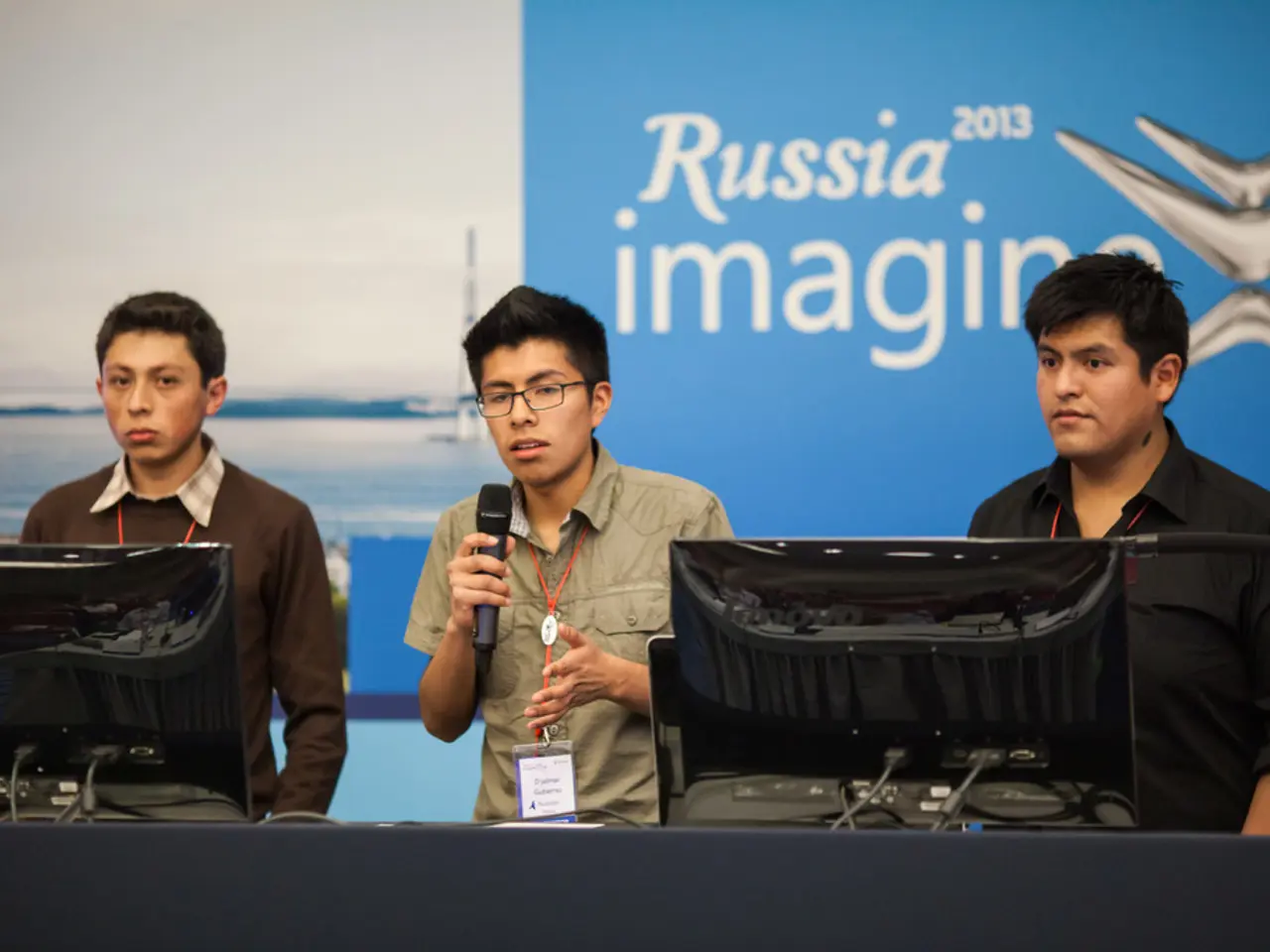Information Era's Ascendancy: Virtual Societies and the Origin of Disputes in the Digital Age
In the modern era, the information domain has emerged as a new battleground in conflicts, including the ongoing Israel-Palestinian conflict. This digital arena, synergistic with the digital environment, has created friction with existing national belief systems, leading to new sources of conflict.
The pro-Palestinian protests, occurring across the globe, share at least a superficial commonality. From the display of Palestinian flags and keffiyeh scarves to the use of the "from the river to the sea" slogan, these demonstrations often oppose their respective governments' official stances on the Israel-Palestine issue. Notably, the information domain revolves around symbols and narratives rather than actual firepower.
One of the key strategies employed in this information warfare is the use of disinformation and AI-driven propaganda. In the Israel-Palestinian conflict, the Israeli government and associated cyber companies have deployed AI tools, bot farms, and fake social media accounts to disseminate disinformation and emotionally charged propaganda. This campaign aims to dehumanize Palestinians, sow division among their supporters, and pressure politicians, particularly in the U.S., to back Israel's military actions.
Russia's cognitive warfare in Ukraine follows a similar pattern, involving disinformation designed to confuse, demoralize, and disrupt Ukrainian society and its allies. Both conflicts illustrate sophisticated use of disinformation, cyber operations, and psychological manipulation aiming to influence domestic and international public opinion, as well as political decision-making.
Cyberattacks and hybrid warfare tactics are also prevalent in both conflicts. In the Israel-Palestinian conflict, high-impact cyber strikes against critical infrastructure, disinformation campaigns, and psychological warfare are used, often within a broader hybrid warfare context. The Russo-Ukrainian War, on the other hand, is a textbook case of hybrid warfare, mixing conventional military action with cyberattacks, disinformation, and manipulation of international narratives.
Core conceptual overlaps between the two conflicts include cognitive warfare, state-sponsored disinformation campaigns, the use of technologies like AI and synthetic media (deepfakes) to create believable but fabricated content, and internet controls, social media manipulation, and psychological operations aimed at shaping domestic and international perceptions.
However, there are differences in context. The Israel-Palestinian conflict's information warfare is heavily focused on dehumanizing an opponent and managing international political support, especially within the U.S. and social media spheres. In contrast, the Russo-Ukrainian conflict's cognitive warfare is broader in scope, involving strategic deception aimed at undermining entire societal structures and international alliances.
In conclusion, the weaponization of information in the Israel-Palestinian conflict is a concrete example of methods typical of Russian hybrid warfare and information warfare seen in the Russo-Ukrainian War. Both employ a mix of cyber operations, artificial intelligence-enhanced disinformation, and psychological tactics designed to manipulate perceptions, weaken opponents politically and socially, and gain strategic advantage without solely relying on traditional military means. The digital platforms have revolutionized the framework by which nations can be organized, enabling information-based communities to form across noncontiguous spaces.
- The pro-Israel movement, mirroring its pro-Palestinian counterpart, employs digital tactics to reinforce its stance, using symbols like the Israeli flag and slogans such as "Never Again" to rally supporters.
- To bolster its defense, the Israeli government invests in education-and-self-development programs and political strategies to counteract disinformation and artificial intelligence-driven propaganda used by its adversaries.
- In the realm of general news, focused coverage on the Israel-Palestinian conflict often includes analysis of intelligence-gathering techniques and strategies employed by both sides for securing strategic advantages.
- In the context of politics, it is essential to understand the significance of the information domain in shaping public opinions and influencing decision-making, exemplified by the ongoing Israel-Palestinian conflict and the Russo-Ukrainian War.




